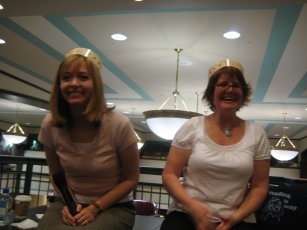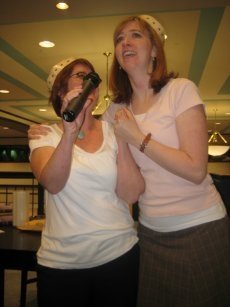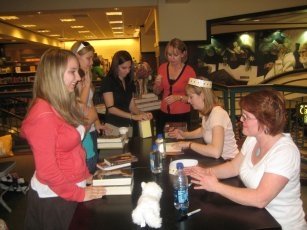When I was eighteen, I met my first authors and it was life changing. I had always loved books and loved writing, but I’d seen it as a hobby. It wasn’t until Libba Bray and Shannon Hale sat down at their Barnes and Noble event in Miami, pastry stickers wrapped around their heads like tiaras, that I realized it was an actual career. By the time they launched into a joint rendition of Total Eclipse of the Heart, I was sold on being an author.


When the time came for the audience to ask questions, awkward eighteen year old me timidly raised her hand and asked the question she’d been rehearsing in her mind for days: “How do you beat writer’s block?”
Now, this was almost ten years ago, so unfortunately I can’t remember their advice verbatim (though I’m sure it was equal parts brilliant and hilarious) but I do remember the bit that stuck with me: Writer’s block is the fear that you’re going to write badly and the only way to beat it is to write anyway.
I have to remind myself of this a lot when I’m working on first drafts (or–as they’re more aptly known now–zero drafts). All too often, I find myself staring at a blank Scrivener document, terrified to start typing because I’m sure that whatever I write will be awful. And the truth is, if just might be, and that’s okay because it’s a first draft.
I like to think of the drafting process like sketching (though not literally because the best sketching I can do is a stick figure).
First, you just need to get down the shapes. There will be way too many lines guiding your way. It will be flat. You probably won’t even be able to tell what you’re really looking at unless you squint REALLY hard. But that’s the ground work, it doesn’t need to be pretty.
In the next draft, you can erase some of those guides–you don’t need them once you get your bearings in the world and the story. You smooth out the shapes so that they start looking like Things. Your characters go from faceless lumps to real people who stand out from a crowd–who love and hate and want and fear. You can look at your story as a whole and know what you’re seeing. Maybe there are recurring themes you hadn’t realized were there. Maybe that character you wrote as a one off is actually way more important than you realized.
Now that you’ve got a solid structure, the fun starts. It’s time to add color and bring it to life. Shade some parts, highlight others. Chiaroscuro. (I went to art school just so I could use that word. Worth it, I guess?) You can make your characters so real, so flawed and human, that they could almost walk right out of the pages. Choices that were black and white in that first draft take on more nuance and complications. Motivations shift and sharpen. The world unfurls and grows until it feels as real to you as this one.
So yes, your first draft sucks, but that’s okay. Let it suck. Get the words down, tell yourself the story however you can. Later, you’ll turn it into art.
Congrats on making it through all that! Your reward is a rare, embarrassing photo of awkward eighteen year old me, meeting my idols.




